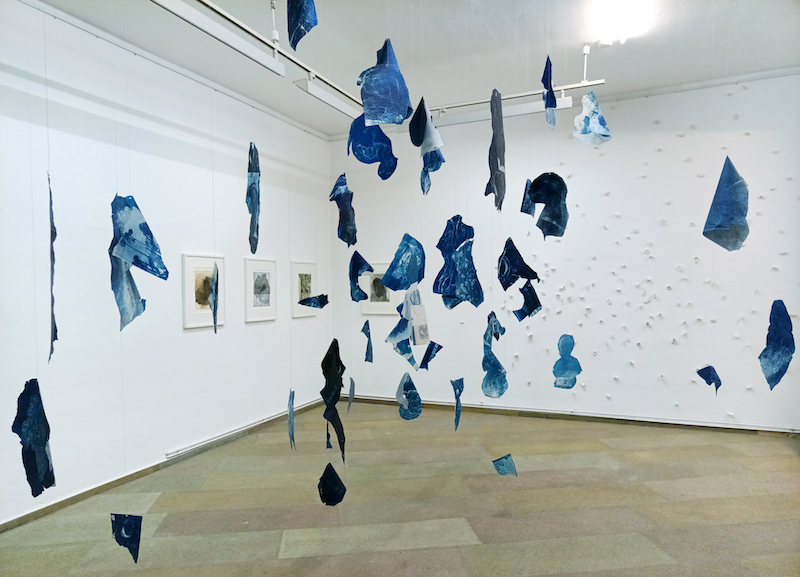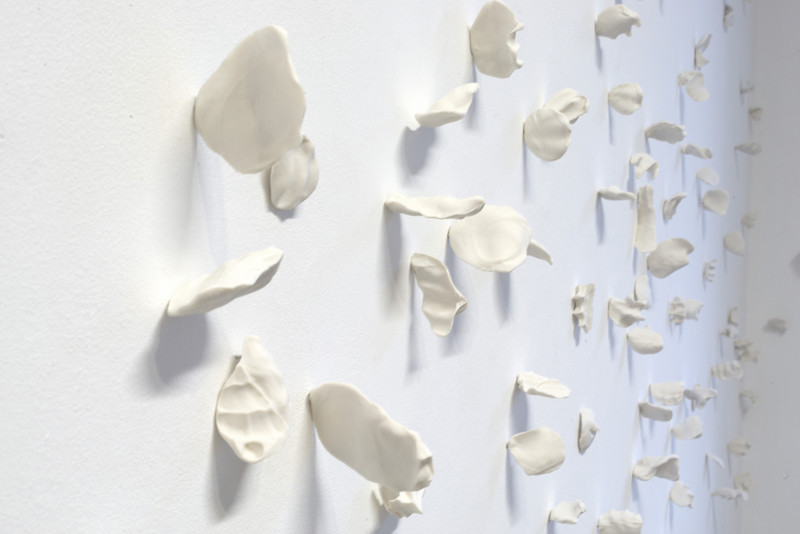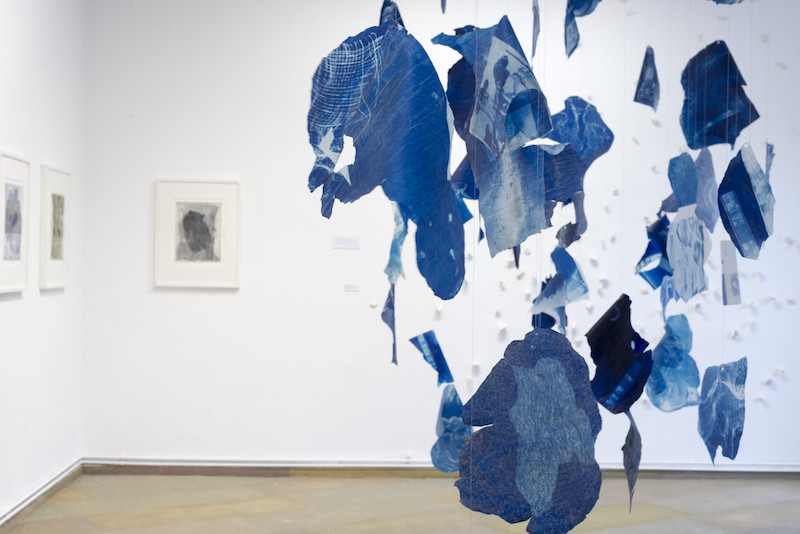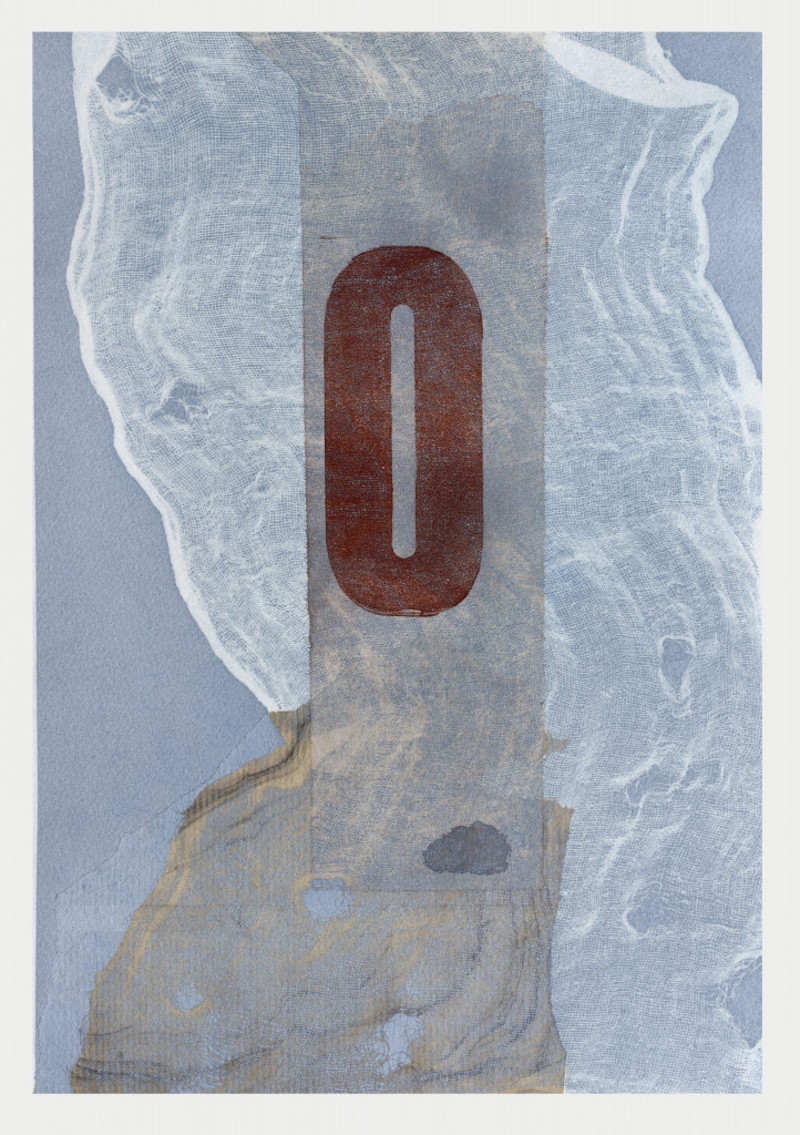by Alice O’Brien // June 21, 2024
Oona Hyland’s current exhibition ‘Active Forgetting’ at Wolf & Galentz, presented with support from Culture Ireland, considers the harrowing impact and silencing surrounding the Magdalene Laundries in Ireland: Catholic institutions that interned, abused and traumatized unmarried pregnant women and their children. Using her preferred modes of printmaking, mokuhanga and cyanotype, Hyland articulates a personal connection to this tragedy through drawings, installations, sculptures and videos. While initially the exhibition appears still and blissful, the subject matter haunts every representation, revealing fragments of the trauma that the Magdalene victims endured and the complicated pulse that it left beating, unheard and unresolved in their families to this day. We spoke to Hyland about processing trauma via artistic practice and the dangerous power of silence.

Oona Hyland: ‘Active Forgetting,’ 2024, installation view // Courtesy of the artist and Wolf & Galentz
Alice O’Brien: Your artistic discography gives a voice to the repressed or misunderstood. I understand the tragedy of the Magdalene Laundries is one personal to you. What influenced your choice to speak of this experience in this collection?
Oona Hyland: I recently discovered that my brother Joe, the eldest of my siblings, was born in the notorious Bon Secours Mother and Baby Home near Galway, Ireland. This entire exhibition is dedicated to him.
The home was one of 18 similar homes and Magdalene Laundries in Ireland. In 2013, 796 baby remains were found buried adjacent to a sewage pit on the grounds of the home, and they are still there today. My brother was lucky in that he was still alive when my mother returned to claim him after she had married my father two years later.
I am speaking out about this as a way to come to terms with my own history and to raise awareness about this tragedy, which is still intensely real to me and other descendants of victims. The women who worked there not only lost their children but also their identities. They were abused and exploited. The Irish State and Catholic Church were aware of the situation and failed these women and their children. It’s a very dark chapter in Irish modern history.

Oona Hyland: ‘The Quality of Mercy,’ 2024, installation view // Photo by Andreas Wolf, courtesy of the artist and Wolf & Galentz
AOB: Your ceramic piece titled ‘Quality of Mercy’ was created by gripping raw clay before releasing it and firing its shape. Did you experience a similar sensation of tension release through creating this collection?
OH: Yes, in some ways. It was therapeutic to create a way to process [those feelings]. The clay holds the print of the maker, of their tension, and the negative space of the grip, which is not usually visible. It makes the unseen seen.
I hope this work speaks to others who have been silenced, either through the shame of revealing this history or the self-censorship of not speaking out about their experience. This trauma is intergenerational—it still affects many people, there is probably not a family in Ireland who is not affected or does not know someone who is affected by this.
AOB: The hanging motifs in ‘Active Forgetting’ appear like torn skin, photograph negatives and even fragments of memory. They feel silent and frozen in time. What were you trying to capture with this stillness?
OH: A lot of my work in this exhibition is about silence and how if something is not spoken about it can become fossilized or frozen. However, these pieces move in the slightest breeze. Simply the displacement of air as you walk around the exhibition animates the paper and, as the torn pieces move, the shadows they cast change and the negative space between the pieces changes too.
I chose to omit pieces and shapes here because many of the documents, like medical or adoption records from the homes, are missing, destroyed or lost.

Oona Hyland: ‘Active Forgetting,’ 2024, installation view // Photo by Andreas Wolf, courtesy of the artist and Wolf & Galentz
AOB: While the overall energy of the exhibition feels silent, however, you invited Korean musician Sun Sangsik and saxophonist Harri Sjöström to soundtrack the exhibition opening in Berlin. What do you feel these sounds added to the curation of the experience?
OH: Music and art are great partners that enhance each other. Sung Sangsik and Harri Sjöström opened the show through the improvisation of experimental music inspired by the shapes and movement of the paper in the works. They moved with the sound and I found it fit perfectly as an experience.

Oona Hyland: ‘Ryan’s Daughters,’ series, 2024 // Photo by Andreas Wolf, courtesy of the artist and Wolf & Galentz
AOB: This tragedy was only publicly addressed in 2010 after the Ryan Report in Ireland, excerpts of which can be seen throughout ‘Ryan’s Daughters.’ What motivated you to showcase this particular chapter of Irish history on an international stage?
OH: I think I have both a privilege and a burden to carry this piece of history and expose it to the world. It’s liberating to show this afresh to international audiences because it is not adequately recognised in my own country. We often seem deadened to it. Familiarity without true recognition, exposure or justice just breeds indifference. However, Culture Ireland is an amazing support for Irish artists and they recognised the importance of exposing this issue to international audiences.
In Berlin, I encountered open curiosity and shock, with an engaged audience on this topic. It was a huge relief to get this reaction when I didn’t experience it at home. If you cannot see it, you cannot talk about it. Silence can kill, we have a responsibility to speak out and art is more eloquent than mere words.
Exhibition Info
Wolf & Galentz
Oona Hyland: ‘Active Forgetting’
Exhibition: June 7–30, 2024
wolf-galentz.de
Wollankstraße 112a, 13187 Berlin, click here for map






















